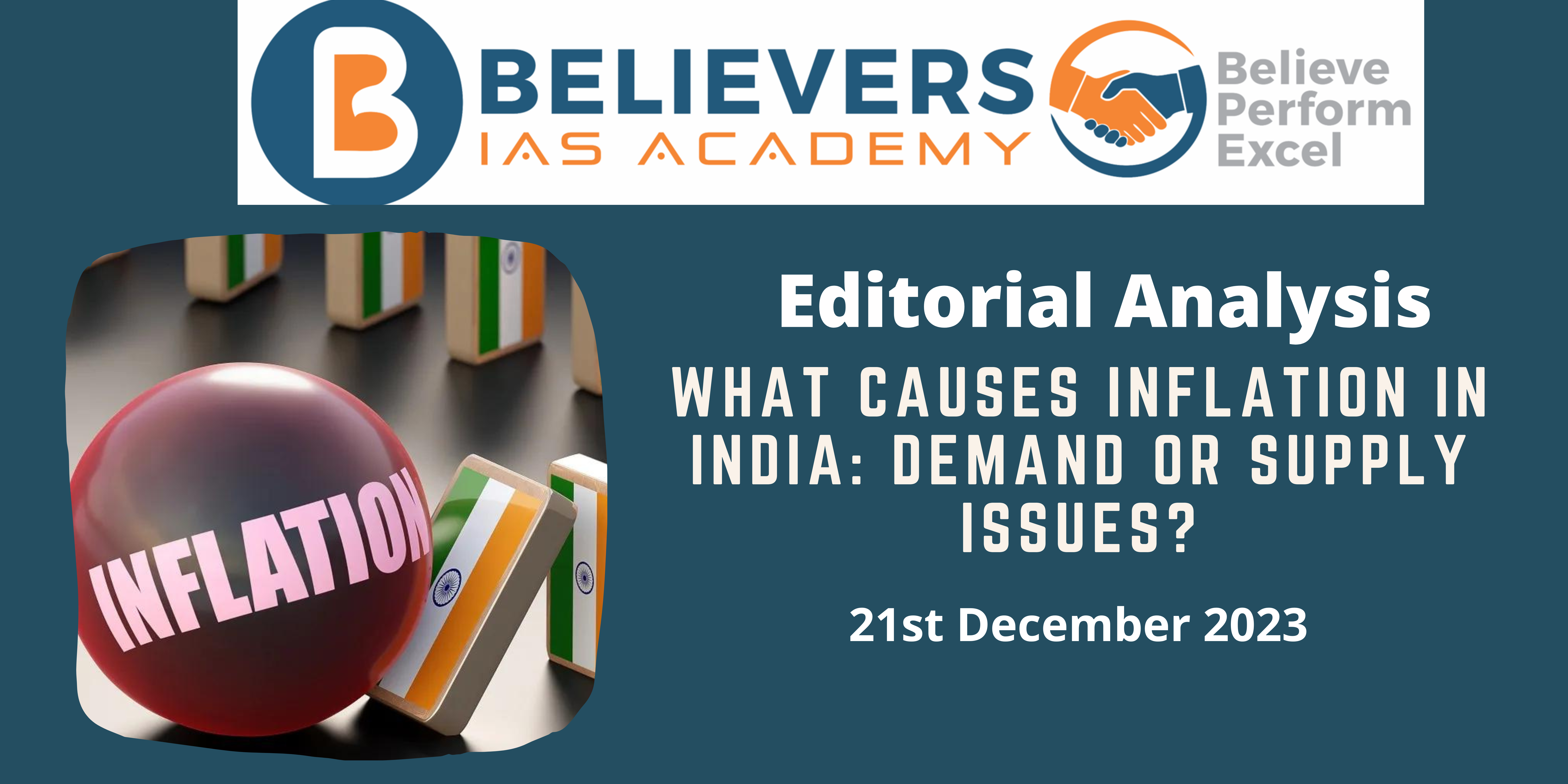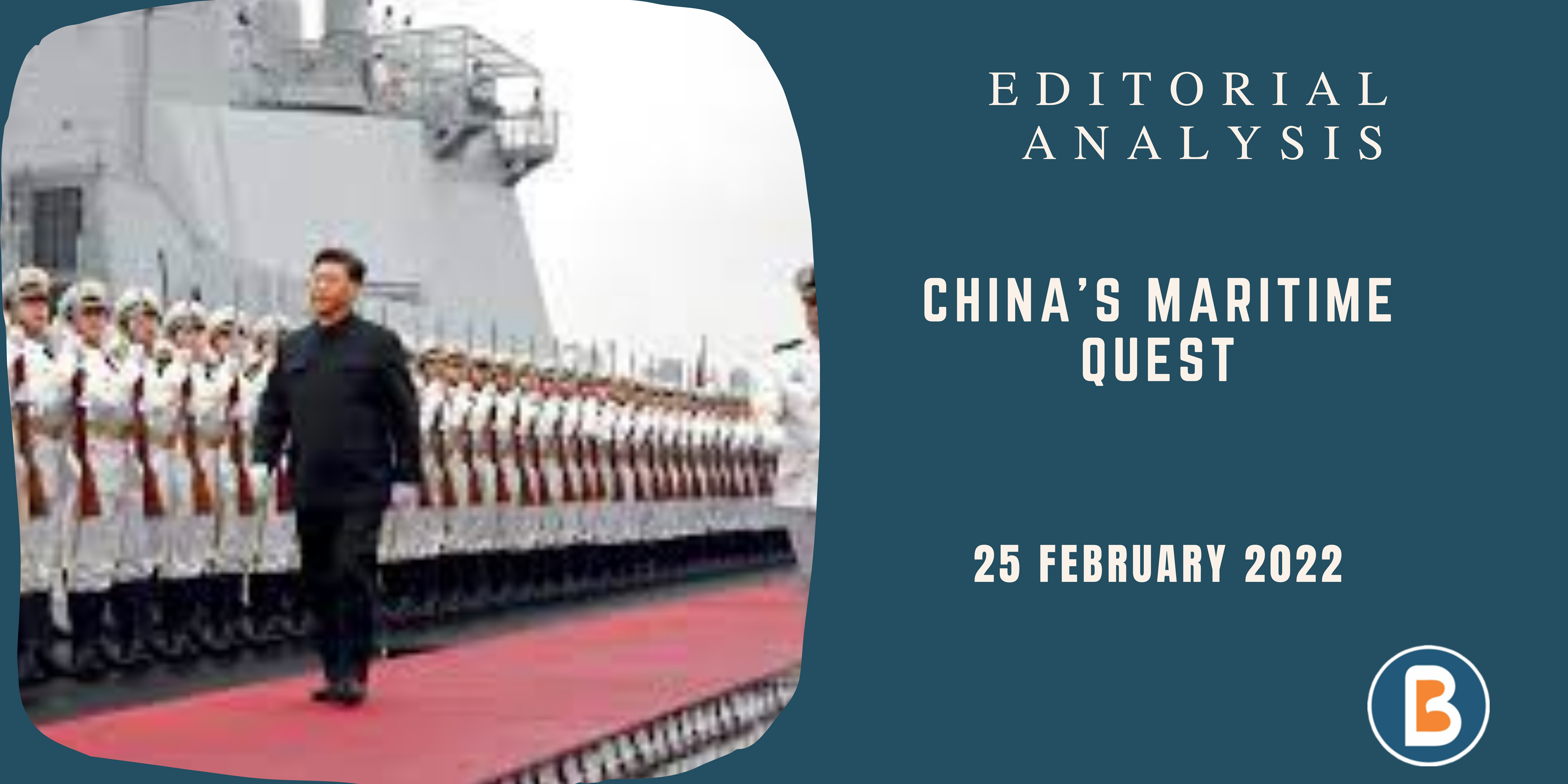What causes inflation in India: Demand or supply issues?
Context:
Inflation in India, often dictated by supply-related factors, occasionally witnesses the influence of demand aspects, notes a publication in the Reserve Bank of India’s December bulletin. The aftermath of the COVID-19 waves predominantly saw supply disruptions causing inflation, but a shift occurred after the Russia-Ukraine conflict, leading to a surge in demand-related factors.
Relevance:
GS-03 (Indian Economy- Inflation)
Mains Question:
Evaluate the dynamics of inflation in India, highlighting the shifts between supply and demand factors, especially in the context of the COVID-19 pandemic and the Russia-Ukraine conflict. (250 words)
Dimensions of the Article:
- Understanding supply and demand
-
Exploring the Centre for Monitoring Indian Economy’s Consumer Expenditure Data
- Sub-group level analysis
- Contribution to headline inflation
- Impact During Critical Periods
- Causes of the Issue
Understanding Supply and Demand:
- The article introduces the idea that inflation dynamics in India are not static and can be dissected into supply and demand factors. Initially, during the pandemic’s onset, lockdowns led to a drop in production and demand, causing a slump in economic growth.
- Subsequently, with the reopening facilitated by vaccination drives, demand surged faster than supply, creating imbalances and pressuring commodity prices. The article then traces the transition to demand-centric forces following the Russia-Ukraine conflict in 2022.
Exploring the Centre for Monitoring Indian Economy’s Consumer Expenditure Data
- To discern the drivers behind inflation, the article employs a method using consumer expenditure data from the Centre for Monitoring Indian Economy. It categorizes inflation as demand-driven when prices and quantities show an unforeseen alignment, and supply-driven when they move in opposite directions.
- This methodology is applied to various categories, revealing that items like vegetables, oils, milk, eggs, pulses, and sugar often face supply-side constraints, while non-alcoholic beverages, personal care products, and health-related goods are more influenced by demand-side factors.
Sub-Group Level Analysis:
- The analysis further delves into sub-group levels, illustrating the percentage contribution of supply and demand factors to Consumer Price Index (CPI) sub-groups.
- Categories like vegetables and oils frequently grapple with supply-side challenges, while non-alcoholic beverages and personal care products are driven by demand-side factors.
Contribution to Headline Inflation:
- The article combines demand and supply factors at the sub-group level, using CPI weights to assess overall headline inflation. It reveals that, on average, supply-side factors constituted about 55% of CPI headline inflation from January 2019 to May 2023. Notably, specific periods, such as the onset of the Russia-Ukraine conflict, saw supply-driven factors dominating the inflation landscape.
Impact During Critical Periods:
- During the COVID-19 crisis, the impact of demand-side factors on headline inflation diminished, reaching 27.1% in 2020 from 41.5% in 2019. However, intermittent increases were observed post the pandemic waves, coinciding with eased restrictions, and notably after the Russia-Ukraine conflict.
- These periods contributed significantly to the peak in headline inflation in April 2022, with the overall contribution of demand drivers standing at 31% from January 2019 to May 2023.
Causes of the Issue:
- Mismatch Between Supply and Demand: The underlying cause of the inflationary seesaw lies in the mismatch between supply and demand dynamics. The pandemic-induced economic imbalance, with lockdowns halting production and demand, set the stage for an intricate economic dance. The subsequent revival, marked by swift demand recovery, threw the equilibrium off-balance, leading to escalating commodity prices.
- Russia-Ukraine Conflict as a Catalyst: The geopolitical unrest triggered by the Russia-Ukraine conflict added fuel to the inflationary fire. Supply chain challenges, already exacerbated by the pandemic, faced heightened complexities. The conflict’s impact on global commodity prices created a domino effect, intensifying the existing supply-side constraints.
Way Forward:
- Addressing supply chain challenges, boosting production capabilities, and aligning economic policies with the evolving demand scenarios becomes crucial elements in this endeavor.
- Strengthening supply chains, enhancing adaptive capacities, and diversifying sourcing strategies can help create a more robust economic framework that can withstand sudden disruptions.
- Policymakers need to exhibit agility in adapting policies to the ever-evolving economic landscape. Continuous monitoring of supply and demand dynamics, coupled with proactive policy adjustments, can contribute to maintaining a stable economic equilibrium.



